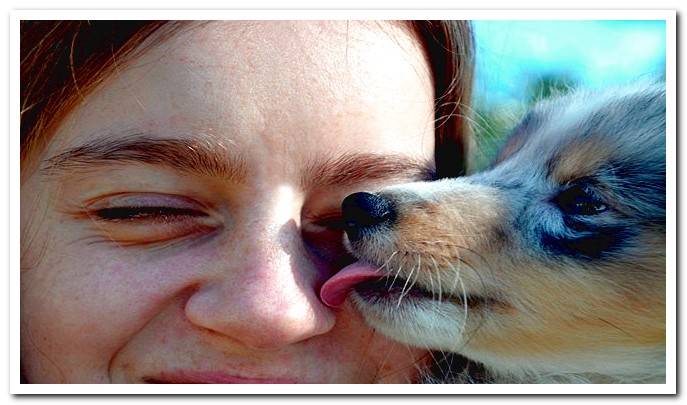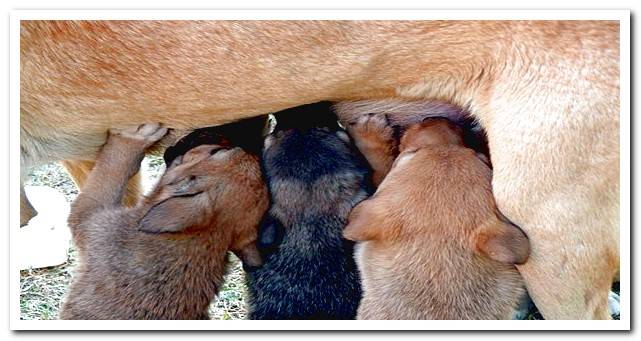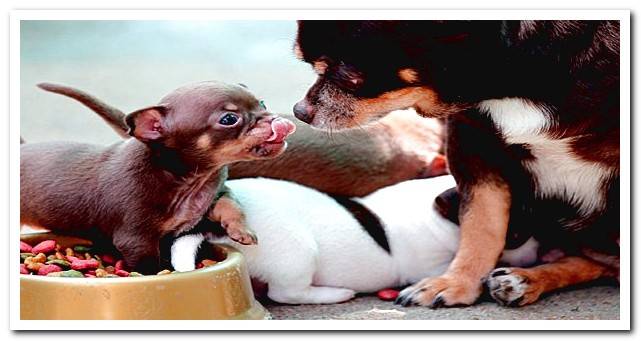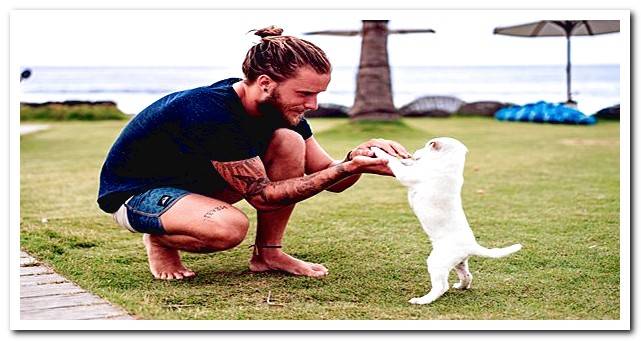
Imprinting is a term used to designate a fundamental stage of the puppy’s life. It is a key period that will decisively condition the rest of your existence.
It is customary to reduce the concept of imprinting to the puppy’s education and socialization process and, although it is closely related to it, it is something that goes much further and involves a whole series of factors and stimuli that affect its cognitive, behavioral abilities. , physical, psychological and affective.
In this article we will try to explain what imprinting really consists of and how to get the most out of this crucial stage in the dog’s life. Do you spend five minutes?
Index of contents
- 1 The importance of correct imprinting
- 1.1 First phase of imprinting
- 1.2 Second phase of imprinting
- 1.3 Third phase of imprinting
- 2 Dog education during imprinting
-
- 2.0.1 Teach the puppy to relate to people and other animals.
- 2.0.2 Help you lose your fear of stimuli to which you will be subjected in the future.
- 2.0.3 Get used to staying alone longer and longer and sleeping in your own space.
- 2.0.4 Show you what things are really dangerous to your integrity
-
- 3 Conclusions
The importance of correct imprinting
Technically, imprinting refers to a very specific stage in the puppy’s life, which ranges from birth to 3 months of age.
The most important period of this stage is between the two and the first seven weeks of life. The type of experiences that the dog is subjected to during this interval, are the ones that have the greatest impact at the behavioral and psycho-affective level.
However, the entire period is of vital importance for your psychological and physical health, as well as for your psychomotor abilities. All this will be decisive in his character and in the way he will adapt to his environment as an adult.
On a proper imprinting depend, in no small measure, characteristics such as the degree of aggressiveness or tolerance to certain situations, the predisposition to receive new stimuli, future fears and phobias, affectivity towards other people and animals, the attitude shown during the game, the relationship with other dogs, etc.
We could say that imprinting is to the dog, what childhood is to the human being. It has been a long time since psychology discovered that many of the traumas that were unleashed in people at certain stages of their adult life, had their origin in certain experiences that occurred in the early phases of their existence.
“Non-rational” animals do not have to be an exception; least when we speak of dogs, whose existence has been linked to that of the human being for many years.
But let’s go to the practical: We can divide imprinting into three fundamental phases.

First phase of imprinting
Until the cub is weaned, imprinting is acquired exclusively through the animal’s relationship with its mother and siblings in the litter.
At this initial stage, our role is merely testimonial. Except for taking care that the mother and the puppies enjoy a hygienic and appropriate environment, we will have little influence on the process.
It will be precisely the mother who will be responsible for providing the basic stimuli that every dog needs at birth. Unless we have no choice, we should touch the newborn as little as possible.
After about a month, the puppies already begin to react to sound stimuli and will learn to identify each of their siblings.

Second phase of imprinting
From the fourth week on, we will gradually accustom them to the human presence, trying not to make the mother uncomfortable or interrupt her care and breastfeeding tasks.
Now the puppies will have already learned to communicate with each other and will have acquired their role in the litter (nesting). This phase ends completely in two months.
The mother still continues to play the most important role in imprinting. It fights the puppies, it gives affection to them when they need it and it separates them when they fight.
These gradually learn the rich canine language, through a whole range of signals based mainly on body postures, olfactory rituals and sound emission.
It is also the phase where they learn to know their body, and to develop their balance and psychomotor skills in general.

Third phase of imprinting
This third phase ranges from weaning the puppy to 18 months of life. It is then that it is up to us to play the leading role.
From this moment on, the stimuli to which we submit our furry friend will be decisive when it comes to adapting to our world and the way in which he will relate to other people, pets and other animals.
It is therefore very important that we begin to expose you little by little to all those situations that you will have to face in the future.
It is time to get the puppy used to becoming completely familiar with other people and that become aware of your role in the human world. We will also introduce you to other types of pets and animals with caution, making them understand that you must respect them and that they are equally valuable to us.
We must bear in mind that we have taken over from the mother as responsible and guardians of the animal and that from now on, we are its main reference.
In this sense, our behavior will also be decisive, since it will be taken as an example to be followed by our furry little companion. If we are friendly and educated people, our dog will also tend to behave more friendly and respectful than if we are not.
It will also be the ideal time to expose him to all those stimuli that may become a source of future phobia, fear, or stress.
For example: In the city we must get used to traffic noise, crowds, meeting places such as bars where dogs are allowed, etc.
We must also teach him the field and the sea, teach him to swim, etc.
And, of course, to recognize the real danger, such as fire, to teach him that he should not cross the street without us, not to chase motorcycles or to approach machines and appliances, plugs, etc.
The more frequent the early exposure to these kinds of experiences, the greater your ability to face certain situations in his adult stage and to lead a happier and safer life.
In this video you can see a practical and highly recommended imprinting exercise
Dog education during imprinting
Note that, except for everything that refers to adaptation and socialization, we have hardly spoken of training itself during the imprinting phase, precisely with the intention of separating the two concepts, although they are obviously closely related.
Imprinting determines the quality of education that the dog will receive. There may be a good imprinting without education, but conversely it’s really difficult.
In fact there are dogs that, without having received any type of training, are beloved animals and that adapt well to the environment, thanks to the fact that they have received a good imprinting.
Below we summarize what the puppy’s education should be like during the third phase of imprinting, after which our role is decisive:
-
Teach the puppy to relate to people and other animals.
It is the ideal time for our puppy to come into contact with other people, in addition to the family, making him a participant in the human world and his place in it. It is also the ideal time to encourage play with other dogs.
It is convenient to introduce him little by little, making him play first with puppies of his age so that he does not get hurt with dogs much bigger than him. We will gradually expand the cast so that you lose the fear of contact with any type of breed.
We will also introduce you to other animals and pets that are not dogs, making them see that they are valuable to us and that they are not a threat, so you should not harm them (cats, birds, pigeons, rabbits, etc.).
-
Help you lose your fear of stimuli to which you will be subjected in the future.
It is another fundamental subject, if we wish that our furry friend does not suffer from certain phobias. Of course, we must be patient and not force him to accept situations for which he does not feel prepared.
Trying to encourage him with our own example and always leaving it to him to make the decision (bathing us first, approaching a pet, getting into the car with us, etc.).
-
Get used to staying alone longer and longer and sleeping in your own space.
For this, we can use a room for this purpose or even a dog cage. We will avoid objects that you can get hurt or break and we will provide a pleasant environment with your favorite toys inside.
So that you perceive the situation as something positive and not as a punishment or isolation. Slowly, we will increase the time of our absences.
In the same way, we must prepare a space and a bed for his own rest, so that he understands that we have our place and he has his.
-
Show you what things are really dangerous to your integrity
Obviously, it is also vital to make him understand that you should never cross a road on your own, approach fire, appliances and other machines.
It is one thing to lose your fear of the noise of motorcycles or cars and another to chase them. Sometimes both things happen at the same time, precisely because he perceives them as a threat.
Conclusions
Dogs can be truly amazing if they have received a good imprinting; and more if this has been accompanied by a good training.
Patience, perseverance, a little common sense and positive reinforcement as a master key will be the keys that allow us to get the best of our furry friend and also the best that we can offer him.
